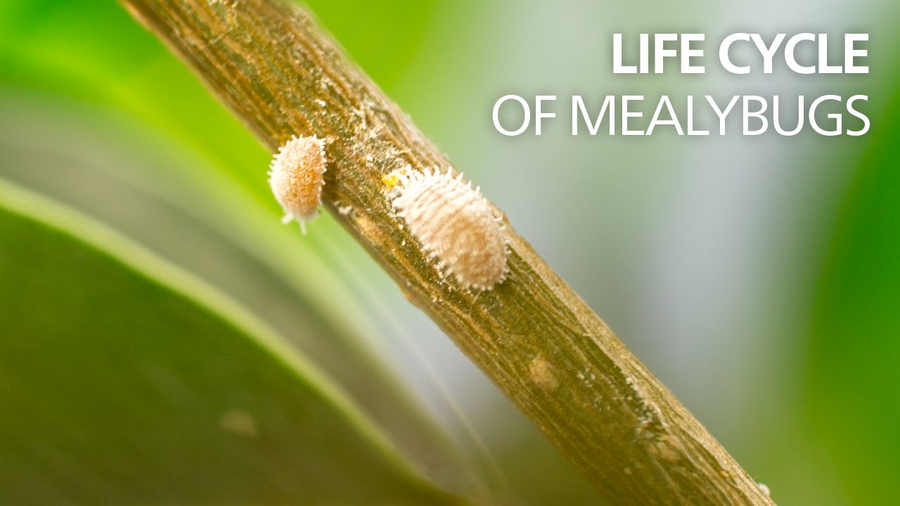General
Pseudococcus longispinus occurs naturally in tropical and sub-tropical regions, but these days it is widespread throughout the world. The range of host plants of Pseudococcus longispinus is less extensive than that of the citrus mealy bug but it nevertheless encompasses many species of (ornamental) crops (e.g. croton, orchids, grapes, avocado, apple, citrus). The species often inhabits concealed places such as auxiliary buds and prefers a warm, humid environment.
Life cycle and appearance of long-tailed mealybug
The long-tailed mealy bug is easily recognized by the long, posterior tail filaments, which are at least the length of the body itself. The length of the other filaments is roughly half the width of the body. The female is 3 - 4 mm long.
Reproduction in Pseudococcus longispinus, may be sexual or asexual, the latter apparently being the more common situation. Unlike most other mealy bugs, Pseudococcus longispinus produces no egg sac. Instead, the female bears live young, depositing already hatched first instars which are at first kept beneath the body in a network of fine waxy threads. Over two or three weeks, a female produces 100-200 nymphs. In the summer, the life cycle takes about six weeks to complete and in the winter about 12 weeks.
Damage symptoms
Mealybugs inflict damage on the crop in various ways:
- Nymphs and females extract the sap from the plant, stunting growth and causing deformation and / or yellowing of leaves, sometimes followed by defoliation. The overall effect is a reduction of photosynthesis and therefore the yield. Flowers and fruit often drop off.
- Plant sap is rich in sugars, but low in proteins. In order to gain an adequate intake of protein, mealybugs must therefore ingest large quantities of sap, getting rid of the excess sugars in the form of honeydew. Characteristically, dark sooty moulds (Cladosporium spp.) are often found growing on this honeydew. Additionally, the white, waxy secretion of the mealybugs, reduces the ornamental value of the affected plants. Fruit and flowers are also fouled, rendering them unfit for sale, and the reduced level of photosynthesis in the leaves also reduces flower and fruit production.
- In ornamental crops, the mere presence of mealybugs is sufficient to render the product unfit for sale. A very small population can thus cause considerable economic damage.
